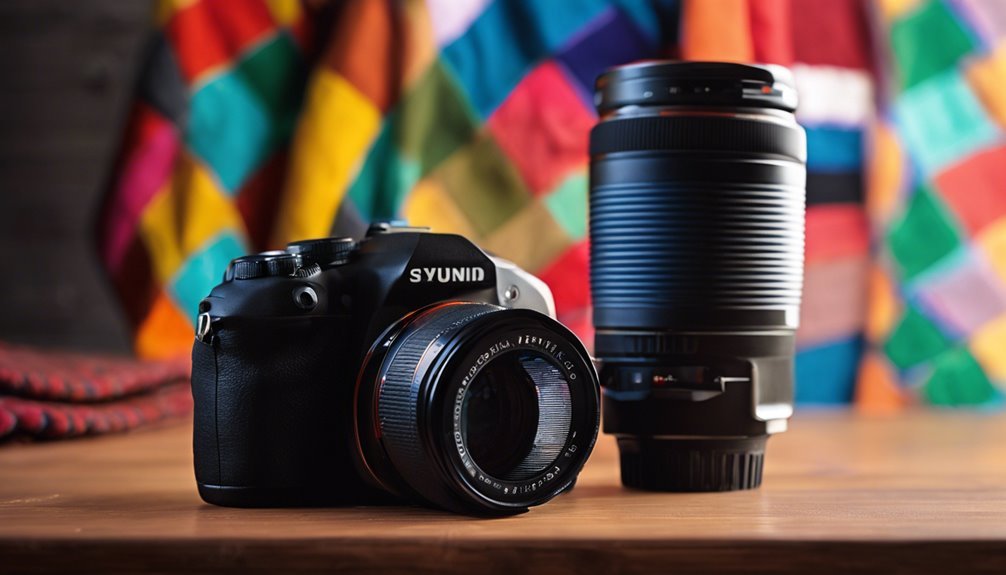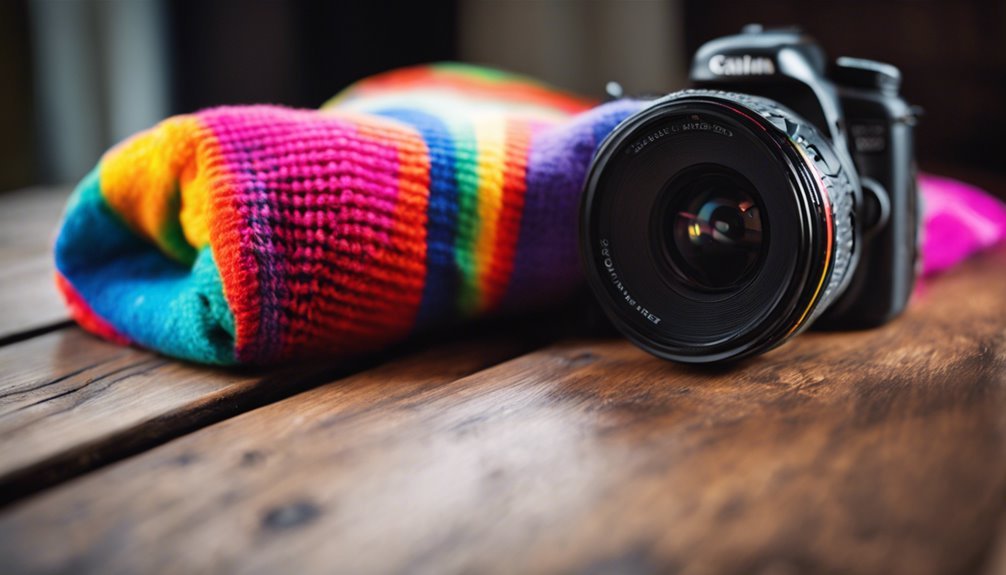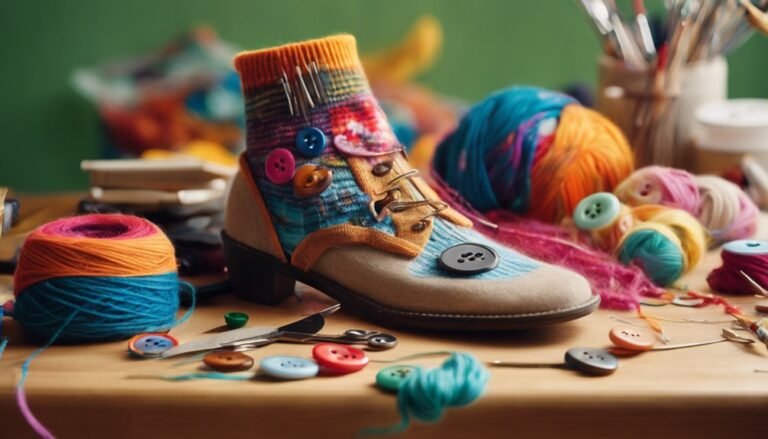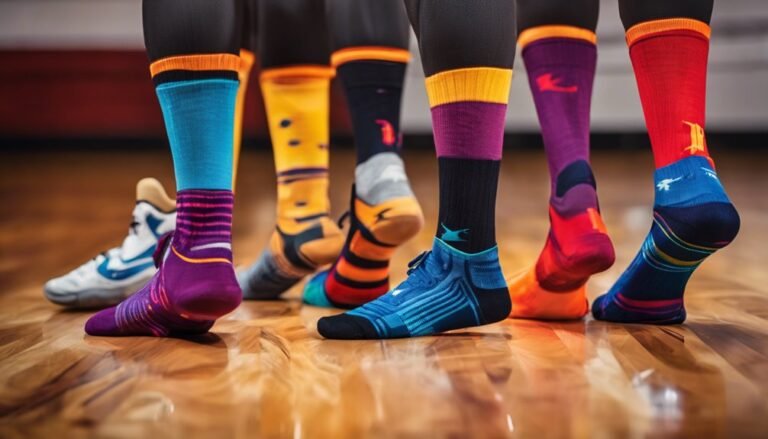How to Use a Sock as a Camera Lens Protector
Imagine this: you're on a once-in-a-lifetime photography expedition, and suddenly, a gust of wind threatens to cover your camera lens in dust and dirt.
What if there was a simple, everyday item that could save your precious equipment from this unexpected hazard? Enter the humble sock. Yes, that overlooked piece of clothing can double as an ingenious camera lens protector.
Choose a soft, stretchy sock that fits snugly around your lens. Ensure it is clean to avoid lint and cut to size if needed. As you gently slide your lens into the sock, it receives a dust-free, cushioned embrace. Secure it with a slip knot, and for extra padding, add another layer of sock.
Wool socks are particularly beneficial as they provide moisture resistance, offering added weather protection. Store your sock-covered lens in a compartmentalized bag to prevent scratches and dust.
Who knew such an everyday item could play such a pivotal role in ideal lens shielding?
Choosing the Right Sock for Your Lens

Selecting the ideal sock for your lens is both an art and a science, requiring careful consideration of fabric, size, and elasticity. You'll want to explore various sock materials, each offering unique benefits. Cotton provides softness and breathability, while wool offers warmth and a bit more cushioning. Consider synthetic blends for their elasticity, guaranteeing a snug fit around various lens sizes. As you navigate these choices, remember that freedom lies in flexibility—opt for a sock that can accommodate both wide-angle and telephoto lenses. Pay attention to the sock's elasticity, as it must stretch without losing shape. This technical dance between fabric and function guarantees not only protection but also an extension of your creative expression, letting your lens roam free.
Preparing Your Sock for Use
Having chosen the perfect sock, it's time to transform it into a functional lens protector. First, verify the sock is clean and free from lint, as these can cause scratches. A lint roller works wonders here. Next, consider cutting the sock to the desired length, allowing room for your lens to breathe while maximizing lens protection benefits.
Here's a quick guide to help:
| Step | Description |
|---|---|
| Clean the Sock | Use a lint roller or gentle wash |
| Measure Length | Verify it covers the lens fully |
| Cut if Necessary | Trim excess for a snug fit |
| Check Fabric | Confirm softness for delicate care |
| Final Inspection | Verify no loose threads remain |
Inserting Your Lens Into the Sock

Once your sock is prepped and ready, gently slide your camera lens into the sock's open end, ensuring that the fabric envelops the lens without exerting undue pressure. Consider the sock types you've chosen; a stretchy material is ideal for accommodating various lens sizes while maintaining a snug embrace. The sock's elasticity should allow it to conform to the lens's dimensions, whether it's a compact prime or a hefty telephoto. There's a certain artistry in choosing the right sock, as textures and patterns might inspire a creative spark while still serving a practical purpose. As you insert the lens, feel the gentle resistance, like a soft barrier against dust and scratches, allowing your photographic spirit to roam free, unburdened by cumbersome gear.
Securing the Sock Around the Lens
To guarantee the sock snugly safeguards your lens, start by selecting a sock of the right thickness and elasticity, preferably one that gently hugs the contours of your camera. You'll need to master some tying techniques, such as the elegant slip knot or the robust double knot, to secure the sock without creating undue tension. By fusing functionality with a touch of creativity, you can transform an ordinary sock into a custom-fit shield for your valuable lens.
Choosing the Right Sock
Selecting the perfect sock for your camera lens protector requires attention to detail and a bit of creativity. First, consider sock material types: cotton provides a soft, gentle touch, preventing scratches, while wool offers a thicker shield against the elements. Synthetic blends bring flexibility and durability, ideal for adventurous outings. Next, sock size considerations are essential. A snug fit guarantees the protector stays in place without slipping, yet it shouldn't be so tight that it risks damaging the lens. Measure your lens's circumference and compare it to the sock's stretch capacity. You might find that a child's sock offers a more precise fit for smaller lenses, while an adult-size sock accommodates larger lenses. Choose wisely, embracing both form and function.
Tying Techniques Explained
While securing the sock around your camera lens, mastering various tying techniques guarantees both protection and aesthetic appeal. Selecting the right knot techniques allows you to transform ordinary fabric types into a snug, stylish safeguard. Here's how you can achieve this:
- Simple Overhand Knot: Ideal for thicker fabrics, this knot provides a straightforward, secure hold. Loop the fabric around the lens, cross the ends, and pull tight.
- Bow Tie Knot: For those with a flair for the decorative, tie the ends into a bow. Best suited for thinner materials, it offers both charm and utility.
- Slip Knot: Offers freedom of quick adjustments. Perfect for stretchy socks, it enables easy removal without compromising stability.
Harness these techniques to ascertain your lens is both protected and adorned with creativity.
Ensuring a Snug Fit

Achieving the perfect fit for your sock lens protector is essential for ideal protection and functionality. Begin by selecting a sock with the right elasticity—one that stretches comfortably without losing its form. This elasticity guarantees the sock hugs your lens securely without slipping off. Consider the lens compatibility; a snug fit means your lens dimensions are well-matched to the sock's stretch capacity. Slide the sock over the lens, guaranteeing it envelops the glass completely, leaving no gaps. The fabric should conform closely, like a second skin, ready to guard against dust and scratches. Avoid overly tight fits that might strain the sock fibers, risking damage or decreased elasticity. With this careful attention, your lens remains free, unhindered, and well-protected.
Adding Extra Padding for Protection
To enhance the protective capabilities of your sock-based lens shield, consider employing the double-layered sock technique, which effectively doubles the insulation against impacts. By slipping a second sock over the first, you create a thicker barrier, ensuring your lens remains secure during unforeseen bumps. For additional cushioning, integrate fabric inserts between the layers, providing a tailored fit and gentle embrace for your delicate equipment.
Double-layered Sock Technique
Two layers of sock fabric can transform a simple protective cover into a robust shield for your camera lens. By embracing the art of layering techniques, you create a defense that's both functional and poetic. Consider the sock material carefully: choosing a thick, durable fabric enhances protection. Here's how to achieve this artisanal safeguard:
- Select the Right Sock: Opt for a sock with a soft, cushioned interior to provide extra padding.
- Layer Strategically: Slide one sock inside another, aligning seams for a snug fit that cradles your lens.
- Secure the Layers: Use a gentle twist or knot at the open end, ensuring the layers remain intact and protective.
With this approach, your lens protection becomes a demonstration of creative freedom.
Cushioning With Fabric Inserts
A thoughtful addition to your sock-based lens protector, fabric inserts provide an extra layer of cushioning that elevates protection to new heights. Imagine a world where your camera lens isn't just shielded but cradled, enveloped in a soft embrace that promises safety. By choosing the right fabric cushioning, you can achieve this. Opt for materials like felt or microfiber; they're gentle yet resilient, offering unparalleled lens safety. Cut your chosen fabric into precise shapes that fit snugly within your sock, ensuring complete coverage. This method not only adds a tactile luxury but also fortifies against unexpected impacts. With each outing, your lens is free to capture beauty without the looming fear of damage, allowing you to explore with confidence and creativity.
Using the Sock in Various Weather Conditions
While it might seem unconventional, employing a sock as a camera lens protector can be remarkably effective across diverse weather conditions. For outdoor photography enthusiasts, this simple solution offers a blend of practicality and creativity. Here's how it serves you in various scenarios:
- Rainy Days: The sock's absorbent material acts as a barrier, shielding your lens from moisture. Opt for a wool sock for enhanced water resistance.
- Windy Conditions: A snug-fitting sock prevents dust particles from scratching the lens, ensuring clarity in every shot.
- Cold Environments: The insulating properties of a thick sock can safeguard against condensation, which could otherwise fog up the lens.
Storing Your Sock-Protected Lens
After mastering the use of a sock as a versatile lens protector in diverse weather conditions, attention must turn to proper storage when it's not in use. Embrace the art of organized chaos by employing sock storage tips that guarantee your lens remains safe yet easily accessible. Choose a breathable, compartmentalized bag to allow airflow while preventing dust accumulation. The sock's fabric acts as a gentle cradle, minimizing scratches and impact damage. Roll the sock-covered lens gently and place it in a pocket or pouch dedicated to lens protection methods. This method fosters a sense of freedom, knowing your lens is always ready for the next adventure, unhindered by cumbersome cases. Your creativity deserves the liberty of swift readiness, safeguarded by simple elegance.
Cleaning and Maintaining Your Sock Lens Protector
Essential to maintaining the quality and functionality of your sock lens protector is a meticulous cleaning regimen. Embrace the freedom to explore and capture beauty without compromising your lens. Proper cleaning techniques can make all the difference. Here's how to guarantee longevity and performance:
- Gentle Wash: Hand-wash your sock in lukewarm water with a mild detergent to remove dirt and oils without damaging the fibers.
- Air Dry: Avoid the dryer. Instead, let your sock dry naturally, preserving its elasticity and guaranteeing a snug fit over your lens.
- Inspect Regularly: Regularly examine your sock for wear, tear, or lint accumulation. Replace if necessary to maintain best protection.
These maintenance tips empower you to care for your sock lens protector with precision.
Advantages of Using a Sock Over Traditional Lens Protectors
You've likely noticed that camera equipment can be quite an investment, but using a sock as a lens protector offers a cost-effective alternative without compromising on function. Socks are ubiquitous and easily accessible, ensuring that you have an immediate solution regardless of your location. This makes them not only a practical choice but also an artistically resourceful one, allowing you to safeguard your lens with minimal expense and maximum convenience.
Cost-Effective Lens Solution
While traditional lens protectors are undeniably effective, using a sock as a camera lens protector offers a surprisingly cost-effective alternative that doesn't compromise on functionality. Embrace the freedom to explore budget friendly options with this simple yet ingenious DIY solution. A sock shields your lens from scratches and dust without the hefty price tag. Immerse yourself in this creative approach and discover its advantages:
- Affordability: Socks are everywhere and inexpensive, making them an accessible choice for anyone seeking to safeguard their camera gear without stretching their budget.
- Flexibility: Stretchable materials conform snugly to various lens sizes, providing a tailored fit that standard protectors may not.
- Sustainability: Repurpose old socks into functional gear, reducing waste and contributing to a sustainable lifestyle.
Explore this artistic expression of practicality!
Easy Accessibility Everywhere
The sheer ubiquity of socks makes them an ideal go-to solution for on-the-spot camera lens protection. With sock accessibility, you're never far from a practical shield for your lens. Whether you're traversing urban landscapes or exploring remote wilderness, socks provide unmatched lens convenience. Their stretchability guarantees a snug fit, while their varied textures add a touch of artistry to your gear. Unlike traditional protectors that require careful packing, socks are effortlessly available.
| Sock Accessibility | Lens Convenience |
|---|---|
| Always on hand | Easy to use |
| No special tools | Versatile fit |
| Lightweight | Soft cushioning |
| Affordable | Quick to replace |
Harness the freedom of always having a protective solution within reach. Embrace the artistic spontaneity of transforming everyday items into essential gear.
Frequently Asked Questions
Can a Sock Protector Prevent Lens Scratches Effectively?
You'll find a sock's embrace, with the right thickness, may shield from life's little mishaps. Make certain it's clean using gentle techniques. While not a fortress, it provides a poetic safeguard, freeing your lens from unwanted marks.
How Do I Choose a Sock Color for Style?
To choose a sock color, consider sock color combinations that resonate with your personal aesthetic. Embrace seasonal sock trends for creative flair, ensuring your choice reflects freedom and artistic expression in harmony with your unique style journey.
Will Using a Sock Affect Image Quality?
Using a sock as a lens protector won't affect image clarity or cause lens distortion, as long as it's removed before shooting. Embrace this creative solution, allowing your artistic spirit to roam freely without compromising technical precision.
Can I Use a Sock on Any Type of Camera Lens?
You can use a sock on any camera lens, but make certain the sock size matches your lens diameter for ideal lens compatibility. This creative, protective solution grants you freedom, blending artistic innovation with technical precision.
Are There Specific Sock Materials to Avoid?
You'll want to avoid thick wool socks, as they might scratch or leave fibers on your lens. Opt for soft cotton blends, offering protection without compromising flexibility. Embrace your creative spirit while ensuring your gear's safety.







